Roma antica foro romano colosseo altare della patria circo massimo roma virtuale 3d lazio
musei-eng
inglese
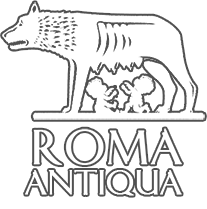


Museums
Classical Museums
Vatican Museums
They are situated in viale Vaticano in Rome, in the Vatican City, and they are one of the biggest art collections of the world, as they house the immense collection of art works built up throughout the centuries by the Popes.
The museum was founded by pope Julius II in the XVIth century and today the route of the Vatican Museums includes the Lapidary Gallery, the Gallery of the Candelabra, the Gallery of Tapestries and the Gallery of Maps. The route of the Vatican Museums ends with the famous Sistine Chapel, the masterpiece of Michelangelo. The Sistine Chapel takes its name from pope Sixtus IV, who wanted to build at the end of 1400 a new building where the Magna Chapel stood. The commissioner of the frescoes of the vault, La Creation, was his nephew, pope Julius II, who commissioned the Florentine artist Michelangelo Buonarroti. Thanks to the pope Paul III in 1534 Michelangelo painted the immense fresco of the high altar, the Last Judgement. All tourists must visit it before leaving from Rome.
The Vatican Museums, which occupy most of the wide “Cortile del Belvedere”, were visited by 4.441.734 people in the year 2008, the most important "Italian" museum , even if it is a very Italian museum, because it is situated in a territory which doesn’t belong to the Italian Republic.
http://mv.vatican.va/3_EN/pages/MV_Home.html
Borghese Gallery
It is situated in Villa Borghese and it houses some works of many important Italian painters and sculptors such as: Bernini, Canova, Bronzino, Caravaggio, Titian and many others.
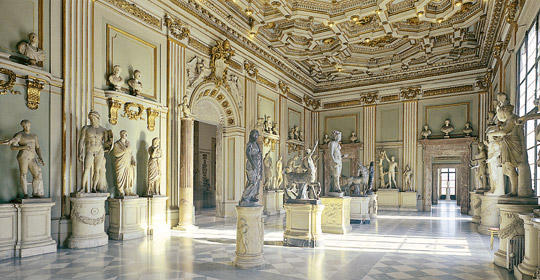 Thanks to the collection of the cardinal Scipione, lived between the late 1500 and the early 1600 today we can admire some art works of the Ancient art and art of the Renaissance.
Thanks to the collection of the cardinal Scipione, lived between the late 1500 and the early 1600 today we can admire some art works of the Ancient art and art of the Renaissance.
In the gallery is placed the famous statue by Canova dedicated to Pauline Bonaparte Borghese and during the first years of 1800 Camillo Borghese sold Napoleon a great number of statues, busts and low-reliefs which can be appreciated in the museum of Louvre.
After 1830 some archaeological excavations and work found in the cellars of Villa Borghese offer new works.
Among the most important works of the collection you will find: boy with a basket of fruit and David with Goliath’s head by Caravaggio, the statue of Pauline Borghese by Canova, Apollo and Daphne by Bernini, Sacred and Profane Love by Titian.
http://www.galleriaborghese.it/borghese/en/edefault.htm
Capitoline Museums
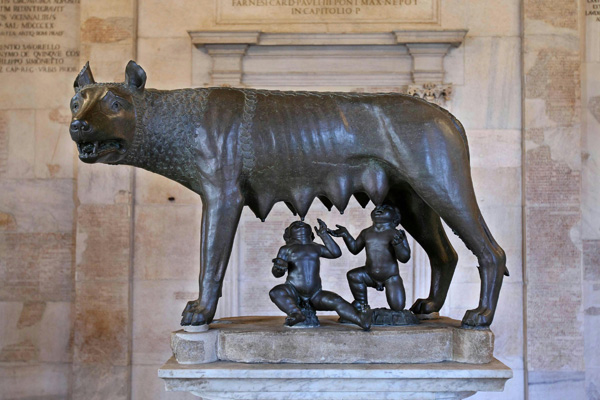 They are the main municipal civil museum of Rome and part of the "System of the municipal museums".
They are the main municipal civil museum of Rome and part of the "System of the municipal museums".
The collection of the Capitoline Museums began with the donation of 4 famous bronze sculptures, Constantine’s head, the Wolf, the Spinario e the Camillo by pope Sixtus IV, before placed in front of the palace of the Lateran patriarch.
From that moment on many work were collected on the Capitoline and therefore the museum Capitoline was opened. A plate at the entrance of the Palazzo dei Conservatori commemorate the donation of pope Sixtus IV to the city of Rome and to its inhabitants.
The Capitoline Museums were reopened after some restoration works and offer an exceptional itinerary: the palazzo dei Conservatori, the tabularium, the palazzo Caffarelli and the palazzo Nuovo are the setting of the Capitoline place, which was designed and realized by Michelangelo.
http://en.museicapitolini.org/
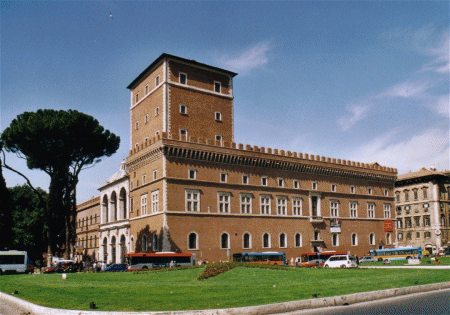 Palazzo Venezia
Palazzo Venezia
The National Museum of Piazza Venezia was built in 1916 according the projects of the General Director of Antiquities and Fine Arts, Corrado Ricci who wanted to move the collections conserved in the Museum of Castel Sant’Angelo. So into the walls of the former Palazzo Barbo prepared a great exhibition of Renaissance and Medieval art, organized by its first director Federico Hermanin, eminent scholar and art historian.
http://museopalazzovenezia.beniculturali.it/index.php?en/1/home
National Gallery of Ancient Art (Corsini Palace and Barberini Palace)
The National Gallery of Ancient Art is situated on two buildings: Barberini Palace and Corsini Palace.
The Barberini family had already sold its collection during the 18th century. The quarrels for inheritance between the descendents, who had to divide the Colonna and Barberini primogenitures, led to a division of the collections between the two families.
Overall, the collection is rich with masterpieces, above all of the XVI and XVII centuries. The 15th century isn’t present completely, but the main painting by Filippo Lippi stand out: the "Madonna an Child Enthroned", dated 1437. Le collections of the XVI century are greater, among which we find the "Fornarina" by Raphael, and the paintings by Andrea del Sarto, Beccafumi, Sodoma, Bronzino, and art works by Lotto, Tintoretto, Titien and El Greco, and works of Bologna artists, and works of the end of the century the beautiful "Judith with the head of Holofernes" by Caravaggio and works of the 17th century with works by Reni, Domenichino, Guercino, Lanfranco, Bernini, Poussin, Pietro da Cortona, Gaulli, Maratta.
http://www.galleriaborghese.it/corsini/en/edefault.htm
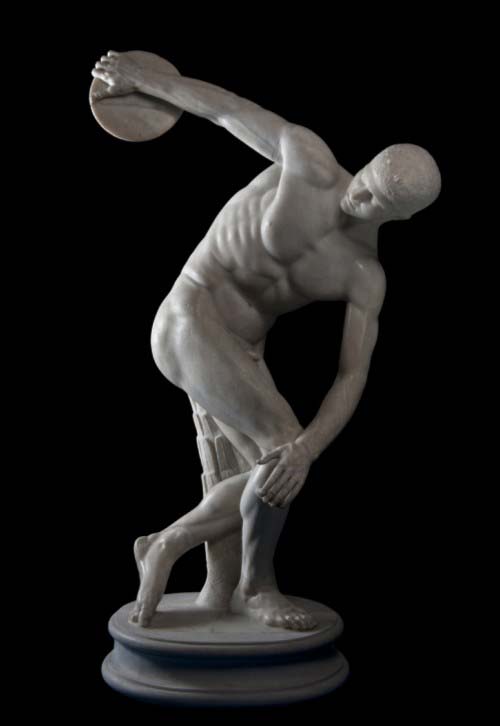
National Museum of Rome (Palazzo Massimo alle Terme)
The palazzo massimo alle terme is the main of the four seats of the National Museum of Rome together with the original seat of the Bath of Diocletian, which houses instead the the Epigraphic Section, the Palazzo Altemps, seat of the Renaissance collections of ancient sculpture, and the Crypta Balbi.
It houses the “ancient art section” (late-republican, imperial and late-ancient works) e the “section of Numismatics”.
The seat of the museum was inaugurated in 1995 and completed in 1998. It is placed in the Castro Pretorio district in Piazza dei Cinquecento, near Termini station.
http://archeoroma.beniculturali.it/en/museums/national-roman-museum-palazzo-massimo-alle-terme
Museum of Contemporary Art of Rome (MACRO)
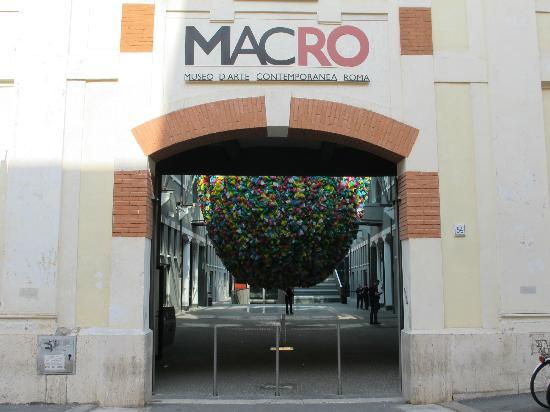 It is a municipal museum of contemporary art. It is situated near Porta Pia, in the Nomentano district of Rome. A secondary seat named, MACRO Future, is situated on two pavilions of the former abattoir of Testaccio, near the Piramide Cestia. It was founded between the end of the XIX century and the beginning of the XX century with the name of Municipal Gallery of Modern and Contemporary Art of Rome, the museum has had many seats. At the beginning of the XXI century it named a Museum of Contemporary Art of Rome.
It is a municipal museum of contemporary art. It is situated near Porta Pia, in the Nomentano district of Rome. A secondary seat named, MACRO Future, is situated on two pavilions of the former abattoir of Testaccio, near the Piramide Cestia. It was founded between the end of the XIX century and the beginning of the XX century with the name of Municipal Gallery of Modern and Contemporary Art of Rome, the museum has had many seats. At the beginning of the XXI century it named a Museum of Contemporary Art of Rome.
MAXXI – National Museum of the XXI century Arts
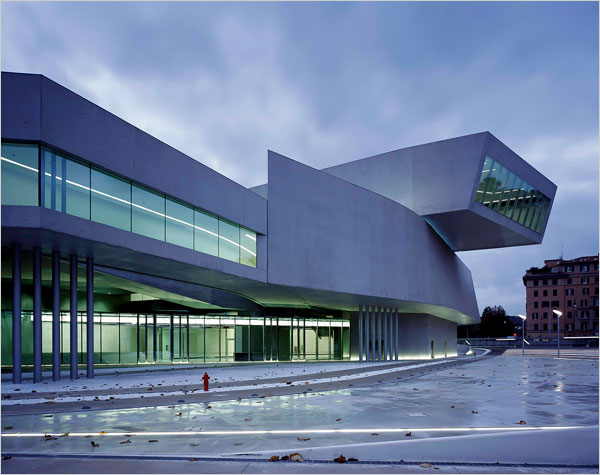 It is a museum of contemporary art, managed by the foundation created by the Italian Ministry of Cultural Heritage and Activities. The museum was designed as a multidisciplinary space committed to experimentation and innovation in the arts and architecture. The MAXXI consists of two museums, the MAXXI art and the MAXXI architecture, whose permanent collections grow through direct acquisition, as well through commissions, thematic competitions, awards for young artists, donations, permanent loans.
It is a museum of contemporary art, managed by the foundation created by the Italian Ministry of Cultural Heritage and Activities. The museum was designed as a multidisciplinary space committed to experimentation and innovation in the arts and architecture. The MAXXI consists of two museums, the MAXXI art and the MAXXI architecture, whose permanent collections grow through direct acquisition, as well through commissions, thematic competitions, awards for young artists, donations, permanent loans.
In addition to the two museums the MAXXI features an auditorium, a specialized library and a media library, a bookshop, a cafeteria and a bar/restaurant, galleries for temporary exhibitions, performances, educational activities. The great outdoor courtyard provides a venue for works and on-live events .
http://www.fondazionemaxxi.it/?lang=en
The National Gallery of Modern and Contemporary Art (GNAM)
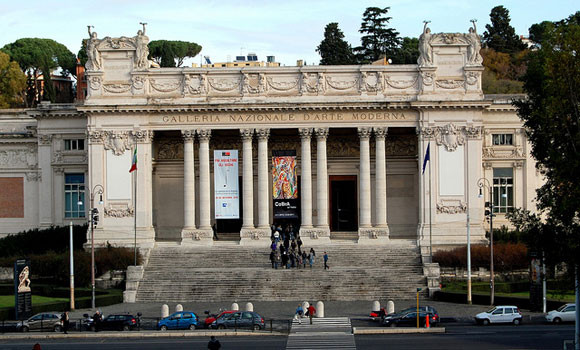 It is the biggest collection of Italian Modern Art. It is situated in Rome, it houses over 4.400 paintings and sculptures and about 13.000 drawings and prints of artists - mostly Italian – of the 19th and 20th centuries.
It is the biggest collection of Italian Modern Art. It is situated in Rome, it houses over 4.400 paintings and sculptures and about 13.000 drawings and prints of artists - mostly Italian – of the 19th and 20th centuries.
It is the biggest collection of paintings, sculptures and prints of artists, mostly Italian, from the 19th century to today. Discovering the main art movements of the 19th and 20th centuries between Romanticism and Metaphysics. Divisionism and Dadaism, getting to know and appreciate the contemporary art through their main exponents.
http://www.gnam.beniculturali.it/index.php?en/1/home
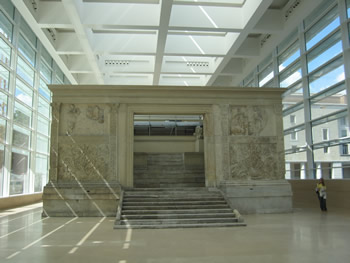 Ara Pacis
Ara Pacis
It is situated on the Lungotevere in Augusta, at the corner of via Tomacelli. L’Ara Pacis Augustae is the name of the altar dedicated to Augustus to Peace in 9.B.C., it is one of the main monuments Augustan public art . The museum is part of the network of the museums of the municipality of Rome. It was opened in spring 2006 after 7 years of works and it was designed by the architect Richard Meier, with steel, travertine, glass and plaster. In spite of the discordant opinions, today the architectural structure is intact, even if the municipality expressed some criticisms about its real value in the city plan.
Museo Nazionale Etrusco di Villa Giulia (National Etruscan Museum)
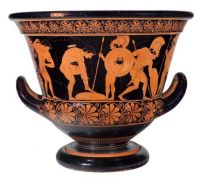 It is a Roman museum of the Etruscan Civilization , housed since the beginning of the XXth century in Villa Giulia.
It is a Roman museum of the Etruscan Civilization , housed since the beginning of the XXth century in Villa Giulia.
The National Etruscan Museum was founded in 1889 with the aim of collecting together all the Pre-Roman antiquities of Latium, Southern Etruria and Umbria belonging to the Etruscan and Faliscan civilizations. The single most famous museum is the terracotta funerary monument, the Sarcophagus of the Spouses which represents an almost life-seize couple of Spouses reclining as if they were at a dinner party.
http://villagiulia.beniculturali.it/
Special Museums
Musical Instruments Museums - http://www.museostrumentimusicali.it/
Waxworks - http://www.museodellecere.com/
National Museum of pastries - http://www.museodellapasta.it/
Keats-Shelley Museum - http://www.keats-shelley-house.org/
Cinecittà Studios - http://www.cinecittastudios.it/
Historical Museum of Firemen - http://www.museovfroma.altervista.org/StoriaMuseo.htm
Blades museum - Via Pescaglia, 27 - Tel 06.55285165 - Only on rendezvous
Toys museum - http://www.comune.roma.it/wps/portal/pcr?jppagecode=mun_vi_museo_gioca.wp
Museum archives of the historical museum - via di San Michele, 18 - 0658552228 – free entry
Crime Museum - http://www.museocriminologico.it/
Jew Museum- Rome - http://www.museoebraico.roma.it/
Videogames Museum - http://www.vigamus.com/
Historical Museum of the art health - http://www.museiscientificiroma.eu/artesanitaria/storia.htm
Museum of Nativity Scenes - http://www.museopresepioroma.it/
